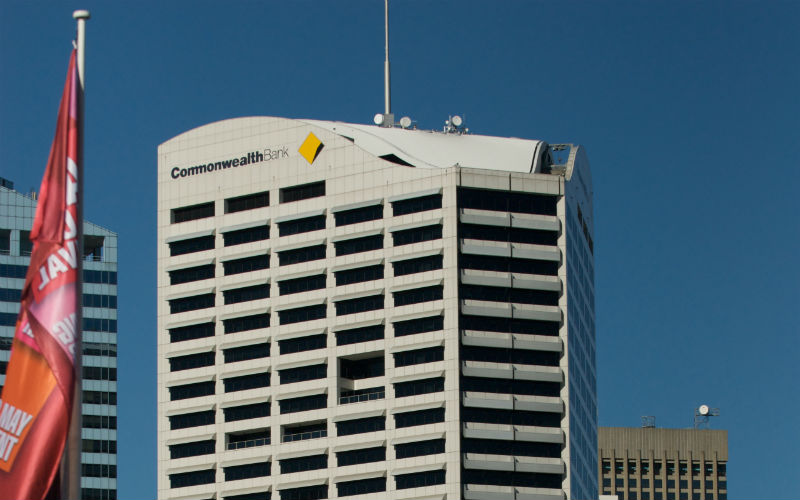On Wednesday, there were two big bits of news concerning the future of the RBA cash rate.
Firstly, the ABS released the Consumer Price Index (CPI) inflation indicator for May, which came in a lot hotter than expected.
Prices rose 4% compared to May '23 with the market expecting just 3.8%, while core inflation (which excludes volatile goods like food and fuel) remains above 4%.
While the RBA tends to focus on the more comprehensive quarterly inflation numbers (the Q2 numbers are scheduled for 31 July), the monthly figure could still be foreboding for mortgage holders.
"It is possible that Australia is experiencing a temporary stalling in the disinflation process, similar to what the US went through early this year," was the analysis of Catherine Birch, senior economist at ANZ.
A few hours after the CPI release, NAB dropped a follow up bombshell, pushing back its forecast for when rates will be cut from October 2024 all the way to May 2025.
NAB Chief Economist Alan Oster said progress on inflation is moving slower than everyone, including the RBA, expected.
"The May Monthly CPI indicator signal[s] upside risk pointing to our expectation for...Q2," he said.
"The mix of slow growth and gradual progress on inflation reflects the RBA's decision to embrace a 'lower for longer' approach - a lower rate peak compared to other advanced economies, resulting in a longer period at that peak."
All of this of course bodes well for TD fans who have been waiting over the last few months for monster rates, after a period of malaise earlier in the year when calls to cut the cash rate were strong.
G&C Mutual (5.40% p.a for one year terms) and Heartland Bank (5.30% p.a for six months) are still unchallenged at the summit of the market, but the signs are increasingly pointing towards more rate hikes in the coming weeks.
This week saw two of the traditional big hitters cut back rates, but this was offset by more players hiking above the 5% mark.
BOQ boosted rates up to 15 bps
| Term length | Deposit size | Payment frequency | Interest rate (Change) |
|---|---|---|---|
| Six months | $5,000-$250,000 | End of term | 5.10% p.a (+0.10) |
| Nine months | $5,000-$250,000 | End of term | 5.05% p.a (+0.15) |
After this week's increase, BOQ re-establishes itself as the provider with the highest term deposit rates from the bigger banks.
Out of the top ten banks by customer deposits in Australia, the 5.10% p.a now available on six month terms with BOQ is the highest TD rate, ahead of 5.05% p.a on six months at ING.
AMP hiked up to 45 bps
| Term length | Deposit size | Payment frequency | Interest rate (Change) |
|---|---|---|---|
| Five months | $5,000-$25,000 | End of term | 5.10% p.a (+0.40) |
| Five months | $25,000-$10,000,000 | End of term | 5.15% p.a (+0.40) |
| Ten months | $5,000-$25,000 | End of term | 5.15% p.a (+0.45) |
| Ten months | $25,000-$10,000,000 | End of term | 5.20% p.a (+0.45) |
AMP Bank also fired this week with major boosts to five and ten month rates.
For these irregular terms, rates at AMP are among the very highest in Australia, although an upper rate of 5.20% p.a on 10 month terms is still 10 bps behind G&C Mutual's 5.30% p.a on nine month terms.
However, the extra month of earning means the same size deposit with AMP would mean a bigger return - a $25,000 deposit at 5.20% p.a for ten months would net you $1,083.33, while $25,000 at 5.30% p.a for nine months means a return around $993.75.
Subject to tax, of course.
Judo cuts long term rates up to 20 bps
| Term length | Deposit size | Payment frequency | Interest rate (Change) |
|---|---|---|---|
| Two years | $1,000-$2,000,000 | End of term | 5.00% p.a (-0.20) |
| Four years | $1,000-$2,000,000 | End of term | 5.00% p.a (-0.10) |
| Five years | $1,000-$2,000,000 | End of term | 5.00% p.a (-0.20) |
Judo slashed rates on several of its longer term products, meaning all now return 5.00% p.a - including three year terms, which were already there.
The premier products at Judo remain six months, nine months, and one year, which all still offer 5.25% p.a.
ME hiked rates up to 25 bps
| Term length | Deposit size | Payment frequency | Interest rate (Change) |
|---|---|---|---|
| Four months | $5,000-$2,000,000 | End of term | 5.00% p.a (+0.05) |
| Six months | $5,000-$2,000,000 | End of term | 5.10% p.a (+0.25) |
| Nine months | $5,000-$2,000,000 | End of term | 5.05% p.a (+0.15) |
ME is the latest TD provider to boost short term rates above 5% p.a, with four, six and nine month terms getting hiked.
For six months, ME is now 20 bps behind Heartland, the market leader.
Bank of Sydney varies rates up to 60 bps
| Term length | Deposit size | Payment frequency | Interest rate (Change) |
|---|---|---|---|
| Three months | $1,000-$1,000,000 | End of term | 4.75% p.a (-0.10) |
| Six months | $1,000-$1,000,000 | End of term | 4.80% p.a (-0.40) |
| Seven months | $1,000-$1,000,000 | End of term | 5.10% p.a (+0.60) |
| Nine months | $1,000-$1,000,000 | End of term | 5.00% p.a (-0.10) |
| One year | $1,000-$1,000,000 | End of term | 5.00% p.a (-0.10) |
Bank of Sydney changed gears with its term deposit strategy this week, shifting its top rate to seven month terms rather than six months.
Seven months will take us through to the start of February, which is when ANZ economists are predicting the first cash rate cut to fall.
However, this fresh rate is still 15 bps behind MOVE Bank, which offers a 5.25% p.a return on seven month terms - which is the highest on market per Savings.com.au's market research.
Other movers
- BankVic boosted one year terms 20 bps to also hit 5.00% p.a.
Advertisement
Want to earn a fixed interest rate on your cash? The table below features term deposits with some of the highest interest rates on the market for a six-month term.
Picture by Morgan Housel on Unsplash










 Staff Writers
Staff Writers
 William Jolly
William Jolly

